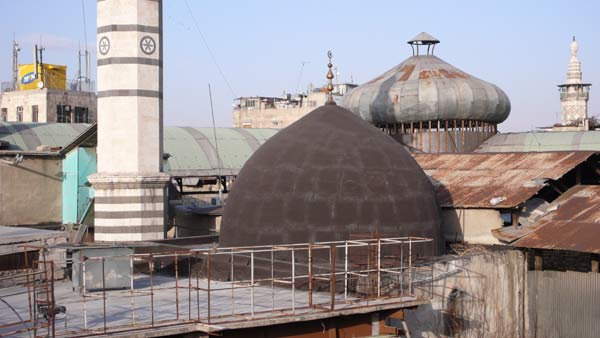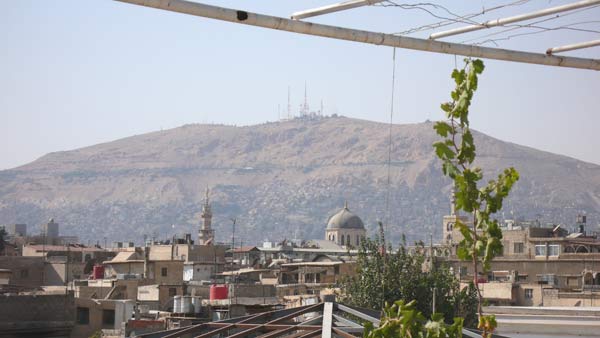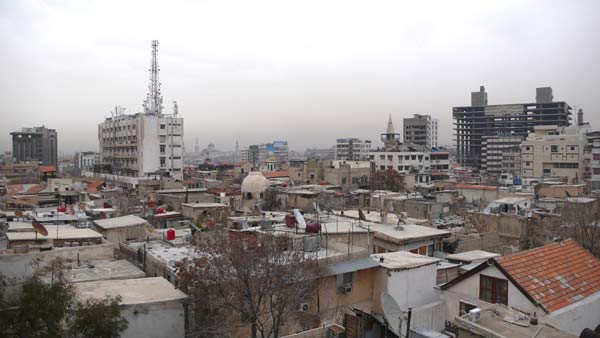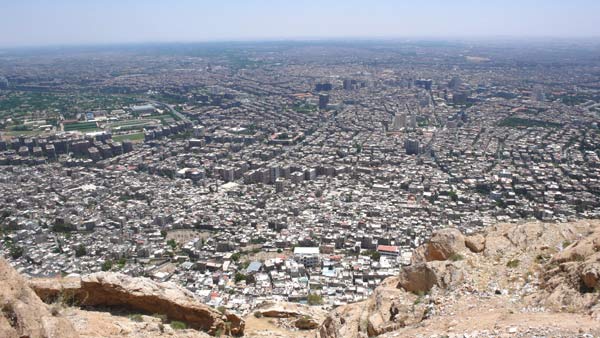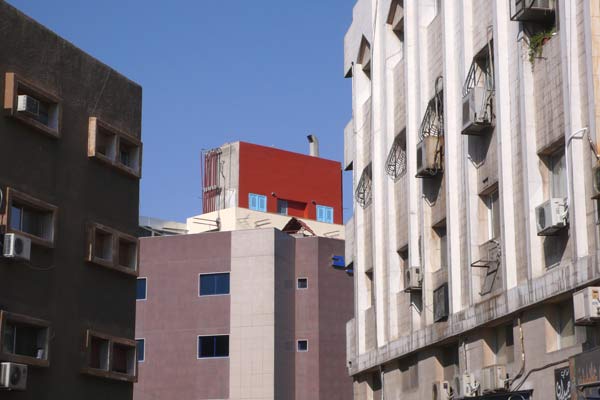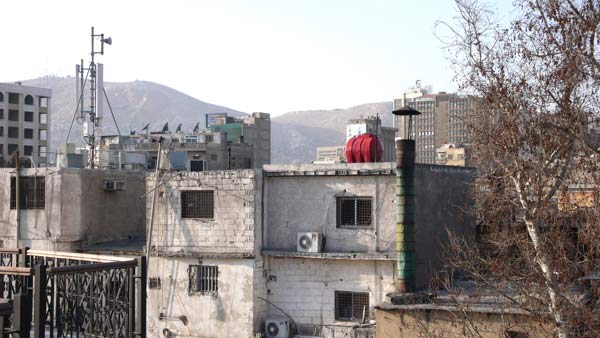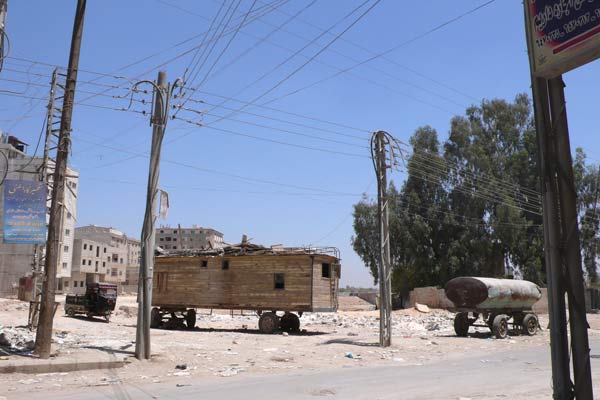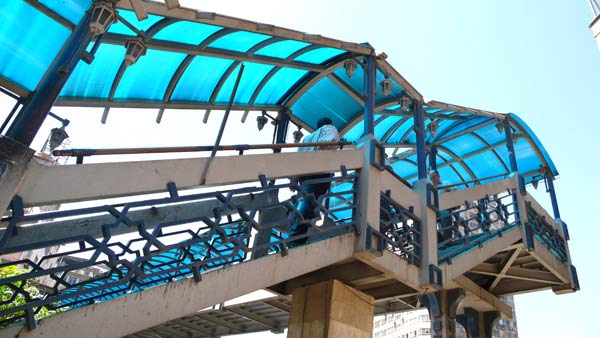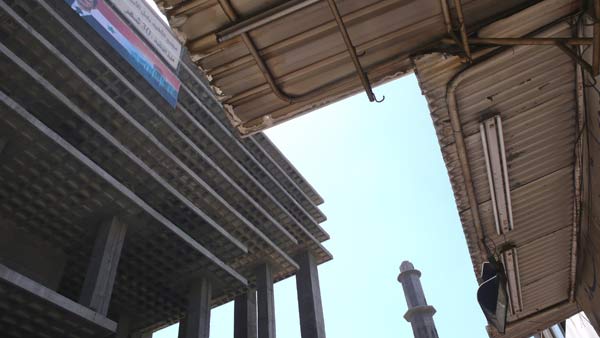R I C O R S O
Dear Sir / Madame,
Architecture, similar to human living, is on the move. Somehow, it seems like a must.
London, 1998, Cities on the Move, an art installation about cities in the far Eastern side of the globe, their transportation tools, streets, people, architecture, arts, psychology, industry, meanings, significance, attitude, memory, sounds, texture, races, shaved heads, bubble gum, and whatever daily life proposed then. Correspondingly, a historical approach about architecture in Damascus; come and see for yourself. There is a lot of history to talk about.
In fact, there is only history to talk about. We are so stuffed with history to a stage beyond desire. History is becoming a killer, and that is a personal opinion of course. I believe in history, and I know for sure that whatever is happening now had somehow taken a place in history: in human thoughts and trials in the search for the truth. However tempting history is, yet when you think of it you would know that it is not yours, like your dreams and memories, which you do not own, “simply because you cannot get rid of”, Professor Donald Kunze said so.
The lines you are about to read were written in different times. I tried to put them in three parts; each is related to a date. This is why the intro is more rigid and decisive than the rest, similar to how we - humans of this part of the world – deal with our regular beliefs. The living moods we are all put into are subject to the following order; you think of something, analyze it, try to set up a scheme for your thought, then you dump it because you are caught up with something else that would bring food to the table.
Or, simply because you realize the amount of madness you are caught into analyzing and figuring out circles of living manners when few in the milieu are things have changed; you know more about interested. Or, because you have no tools under your nose to maintain your thought, feed it in the hope for it to flourish. Then you think about it again, but now life and people, you have seen more, have thought more, have slept and eaten more, have dreamt more. Now you have A stand on A solid platform. Then again, you change your mind for a thousand and one reasons, yet,
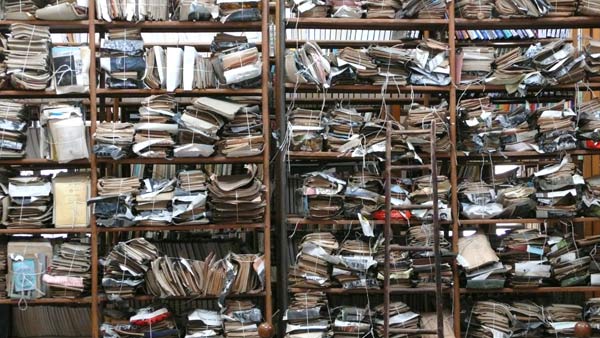
Al Maktabeah al Thahiriyyah (Library)
your reasoning is still subject to historical factors, which you will discover later that it is all hypothetical but sewed in a way that would fit your friends and family only. Years later you do the same thing repeatedly, you assume you have a stand of where, how, and when things happen. You will start to understand that your place - on solid ground - is modular. Still, you know you do not own it, simply because you cannot get rid of it.
Damascus May 5th, 2008
May 2000 to March 2008 – A no plan Decade?
May 5th, 2000
Producing a guide to recent architecture for a city like Damascus is an engaging theme, both in terms of presentation and information.
Damascus has been acknowledged as the oldest inhabited capital in history, which adds a possible value to a research – search – for its current image
October 1st, 2002
The proposed here is designing a diagram for an architectural tour of today`s Damascus, point out its image layering to its navigators, and render the blend of its recent image`s synthesis.
History: Damascus, Aramaic, Islamic to present, with some of today`s secular living manners, makes a metropolitan. In this sense, its recent layout expresses a lot about its struggle; being an ancient city trying to assimilate today’s international trends and functions.
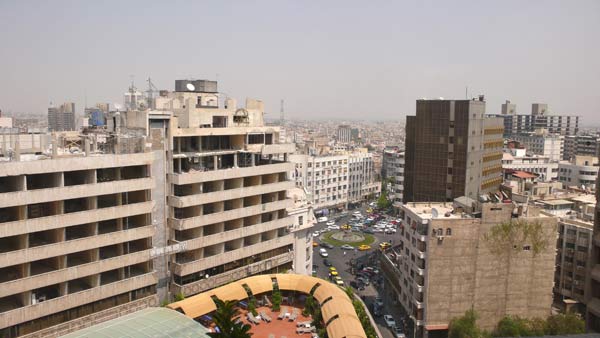
view from Cham Hotel over Sahaat Yousef al-Azma
Social, economical, political and architectural are at hand. In short, in the present city of Damascus, building’s functions are in a constant change and the possibility for making a new image, although tough, yet might be still possible. This exhilarates an attention towards speaking in architectural unfolding terms – not to talk of a problem, but to produce a description of a character for a city.
March 20th, 2008
M A N I F E S TO
Architecturally speaking, now that we are beyond the borders of the year 2008 when the Syrian capital, Damascus, is the Arab capital of culture, one thinks:
The first thing you see as you enter the city space is a very large model of cubic molds covering an area that starts at around the beginning of the city on all sides all the way to the center.
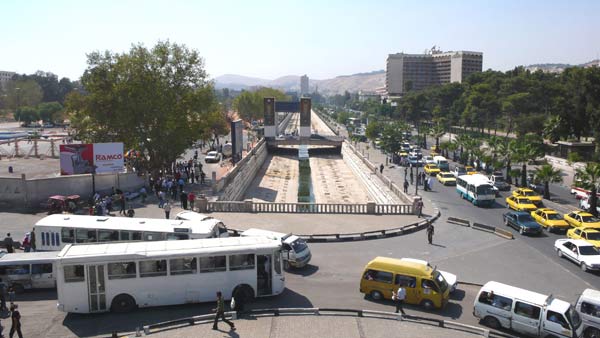
Shoukri al Quawatli Street along Barada river towards Mezze
What center? Such huge impact of no impact, which displays built forms that are located all over the centre of Damascus. But the focus of attention is of course the conglomerate of high towers gravitating around the Mezzeh Autostrad or Thawra Street.
However, the mass dilemma is concentrated in the new “projects” performed and then suggested under the patronage of today’s urban decision makers. Most of their happening projects have been under construction for the past 5 years and results are still invisible.
Ideas about other urban development projects are also starting to appear. What`s visible on the surface still is fancy 3 dimensional computer generated photographs and texts. All the chitchat is targeted towards central projects and large-scale propagandas exclusively at the disposal of some investors, no mater how serious their intensions are.
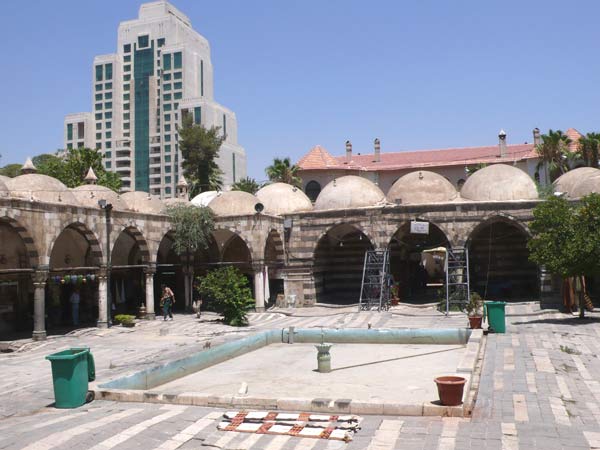
Semiramsis behind Takiyyeh Suleimaniyeh
When the projects are shown to prospective buyers they are colored and very chic looking. The colors add a geographical sense for an urban planning subject as such, but I am not completely sure how they will match the promised new reality. The representation of the new urban structure surrounding the iconic projects supposed to be locations holds only symbols of it. Are we a symbolic population? I do not think so.
Behind the verbal presentations of the promised projects there is no real documentation. I find this neither incredible nor quite cool; under all the gloss and shine of the concept and the promised luxurious buildings, the government has accepted the purely false representation to the general mind. A large mirror hangs above of the city center and surroundings, people are not able to see the horizon, it is only themselves and their present status they are looking highly at. Look above your head. What a disaster. A mirror is a handy device as it provides an eye`s view of the situation. One wonders: Where are we situated?
Some history might help:
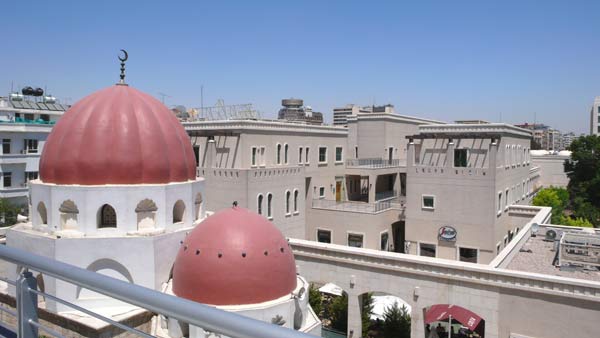
Semiramis, embeded mosque and Segafredo
The Takiyyeh Suleimaniyeh, designed by famous architect Sinan and it certainly does not looks like a cousin of the Four Seasons Hotel, where local stone cladding is sliding up and down the facades. It, in fact, as most city inhabitants think, does not make a huge contrast to its older relative; the rest of the 1970`s and 80`s city buildings. Considering the epoch when it was built, one thinks that the Four Seasons building could have been an extraordinarily architectural smoother and a corrector of the transaction between the historic, the old and the new.
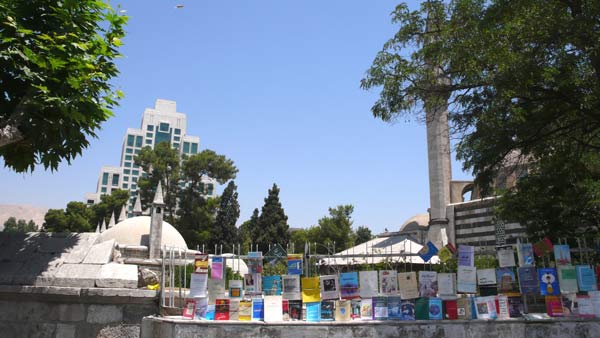
Semiramsis behind Takiyyeh Suleimaniyeh
You can see people using the pedestrian`s bridge going from one side of the city to the other, from the historic to the Four Seasons, yet none of them is going to work. This none transparency of the situation is not helping.
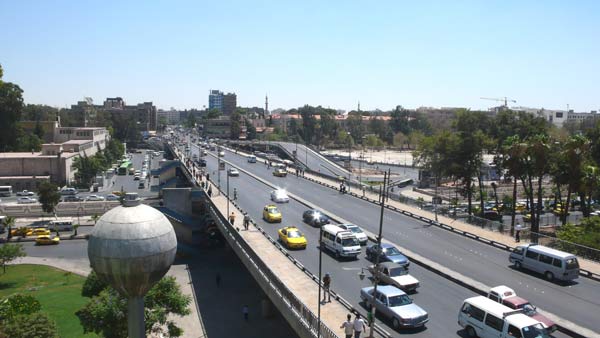
view from Semiramis overlooking Victoria Bridge
The building is not cohabitate with all its neighbors. The impact of the building`s massing on the surrounding context is minimal. The site is very crowded and this tower must have been maximun double the height of the old stone building across the street.
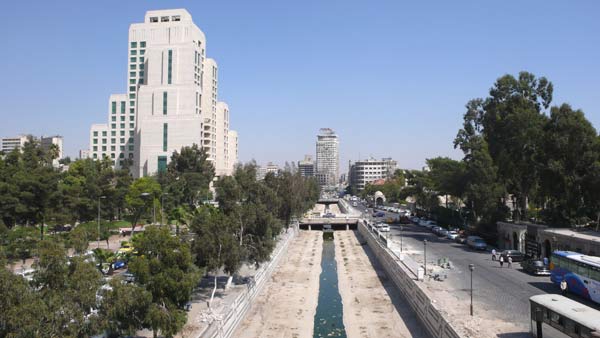
Sharia Shoukri el Quawatli along Barada river
However, from most points of view at street level, this building is only invisible from its own terrace.
Thus, it seems that the second millennium has not carried yet anything new or any corrective issue to the building environment in the city of Damascus. Local architects, designers, and their partners and collaborators, who are suppose to be in charge, and who, for instance, have designed the Omeyyad or the Abbasyeen squares, did not do it either. It is the first large rehabilitations of a public space since the early 70`s.
These types of projects must be included in an exhibition about building. An exhibition as such might help to connect the city with the professionals, architects and engineers, whether the exhibited subjects are going to be Modern or historical, it is important to gather the examples in order to understand what is really going on, both technically and visually, and to upgrade the local human capability to see and think; I mean both popular and professional views.
The bridge towards a correct building environment is long and wide. But in comparison to what is going on in the world, it is thin, very thin, and at the inauguration day will wobble. They know it, so they introduce virtual projects, but on a windy and wet day it can be pretty scary trip, not very exiting. When you are in the profession of building, you would always think that the apparent delicacy of the present local thinking makes you float constantly; it makes you aware of the tidal force of the environment. It might be that professionals try but the system fails them.
However, from whatever angle you look at the architecture of the city, there seems to be a boring repetition of details and structural elements in most of its projects. We are all bored by this architecture. We all understand buildings as dynamic systems where not only the content but the container moves or implies a shift or a rotation, it is simply not happening.
While we are not enjoying visual living so much, a particular silhouette to the city Skyline is being composed. What will happen in the future with the continuity of the no plan decade?
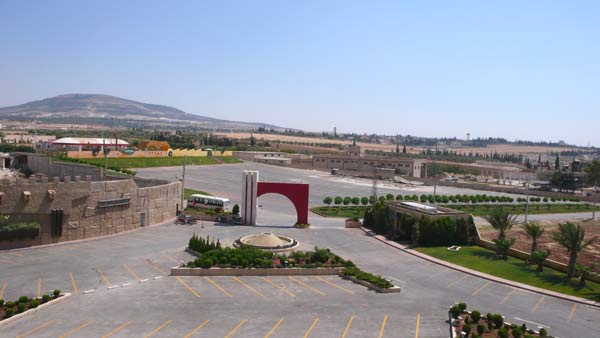
prospect restaurant and hotel area near Hama
Buildings stand in front of other buildings. Buildings are designed by architects and/or their fellow builders. By far, weather the no plan building manner take a horizontal or vertical growth, it will be the ugliest city on the map. A none planed stacks of structures are laid in a way that architecture seems to become a dividing body between the working class and a bunch of villas in the western side of town. You see, I am comparing people to mute buildings.
I invite practicing architects, engineers, and other willing members of the audience, including investors and developers, to an exhibition of their work.
Text by Michel Zayat, March/May 2008, Damascus, Syria
Photographs by Rayelle Niemann, Damascus 2007/2008
R I C O R S O
[ A Rug - Post-orientalism ]
[ Cairo Divided ]
[ City of Events: a Close Look at Al Abdali Bus Terminal and Beyond ]
[ DADA Houses & Bucharest Strip ]
[ DIWAN ]
[ Die letzte Buche - The last beech ]
[ Leerstand ]
[ Model Citizens ]
[ Mukhattat mabdaee lilmustaqbal—Blueprint of the Future ]
[ Presence ]
[ Psychogeography ]
• R I C O R S O •
[ Reaching Boundaries ]
[ up the hill down the hill - Bird Cages - an installation ]
FEATURED THEME ON CITY SHARING
by ASUNCION MOLINOS GORDO
-
This project is an instrument for common critical analysis to help understand the reasons behind Egyptians’ diminishing …
by INAS HALABI
-
The project Letters to Fritz and Paul focuses on the expeditions of the Swiss cousins, lovers and scientists, Fritz and …
by SARAH BURGER
-
The planned modern city of Brasilia attracted me since a long time. Her defined shape, location and function proceded he …
by ADRIEN GUILLET
-
Youri Telliug talks with the artist Adrien Guillet about his project Citracit
Youri Telliug - What is Citracit …
by NIGIST GOYTOM
-
In 2013 more than 45 million people have been forced to leave their homes. This amounts to the biggest number of refugees …
by SULAFA HIJAZI
-
The on going debate on Arab identity and its (cultural) representation is strongly shaped by Edward Saidʼs formative …
by ASUNCION MOLINOS GORDO
-
WAM is a site-specific work that uses the historical trope of the cabinet of curiosities to explore the introduction of …
MORE CONTRIBUTIONS BY THE FOLLOWING
